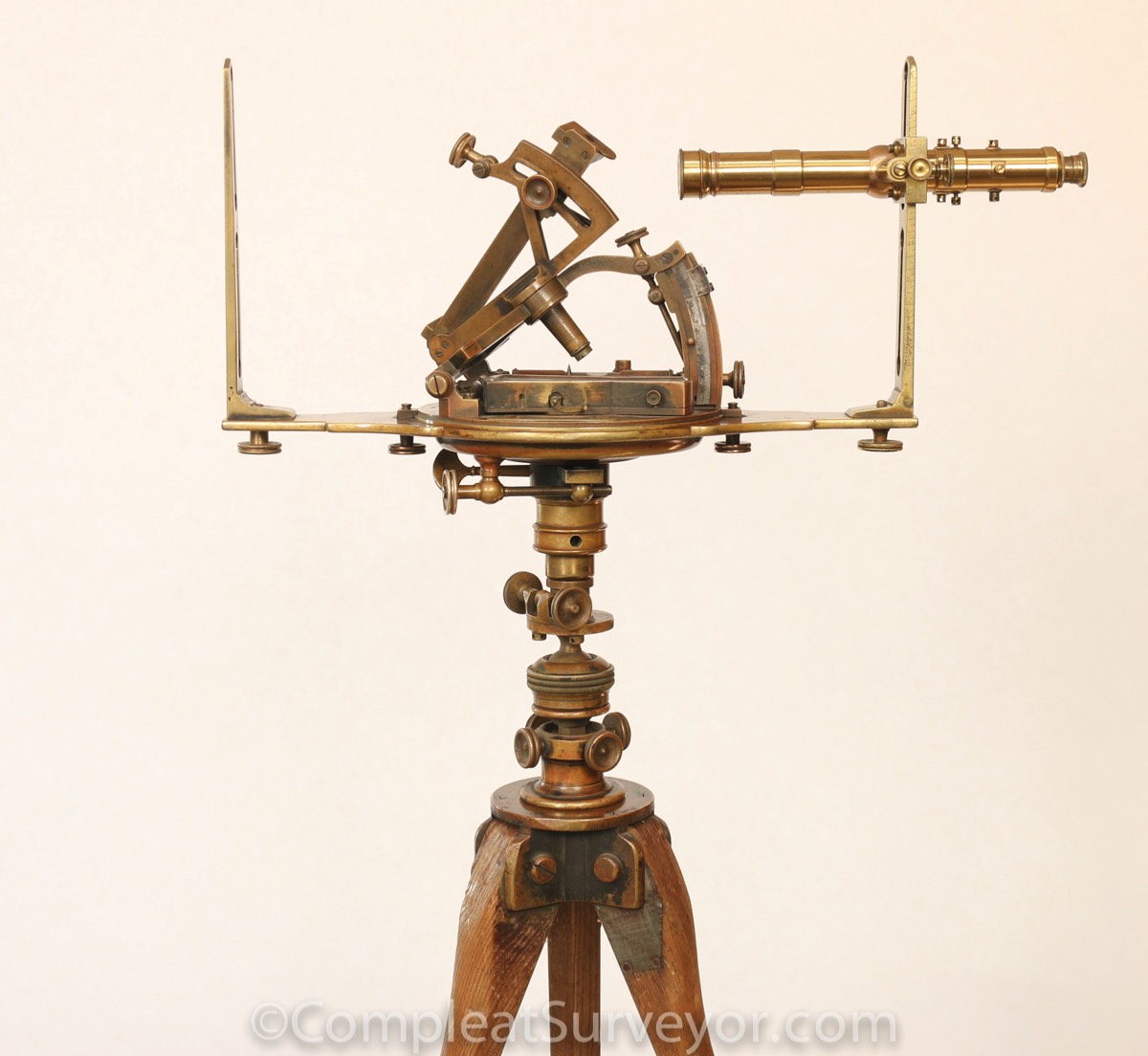
Wonderful Circa 1870 Gurley Solar Compass
Spectacular Instrument with a Known History
This is a really cool early solar compass - the solar compass with scope, tripod, tripod adapter and box have lots of personality when you look at everything together. I can’t imagine a Gurley SC having more personality and eye appeal than this one.
I believe this SC was made between 1865 and 1870. I opened up the solar compass to look for engravings, but didn’t see anything. It can be very challenging to date a Gurley solar compass because Gurley made very few changes to their solar compass line over 60 years or so.
This SC has a tell however. If you look at the small compass box, the degrees have guidelines. That means that the small compass box was hand-engraved. Gurley and other makers would install the circular guidelines to let the hand engraves know where to end the degree lines, so that all degree lines would end uniformity. Without the guidelines, the hand engravers couldn’t be exact on every line, so the degree lines would be of different lengths.
Interestingly, on this SC, the verniers do NOT have guidelines.
I had a dated 1858 Gurley SC that had guidelines on both the compass box and verniers.
Gurley evolved from hand engraving to machine engraving (a dividing engine) for the compass degrees in 1865 or so. Gurley stopped using guidelines when it went to machine engraving. So I date this SC from 1865 to 1870. The compass box was done by hand, while the verniers were done by machine.
Gurley did not use serial numbers on their instruments until 1908, so it’s pretty rare to know the history of an instrument. Luckily, two prior owners are identified here. The box itself has the shipping label for Ira Hoffman, who was a U.S. Deputy Mining Surveyor in Oregon. Ira also held a number of other surveying jobs in Oregon.
The telescope box identifies the other owner. Very faint, but readable:
“H. H. Johnson Oregon City”
That’s Hezekiah Harris Johnson, a US Deputy Surveyor from Oregon City. He went by “Ki" apparently. Lots of history on Ki, but I think he only used this instrument a few times in Idaho in 1884 to 1885. He took a county job in Clackamas County for 10 years, and I suspect he sold the SC to Ira Hoffman, who also worked for Cklackamas County at the same time. They had to know each other.
The box for the SC isn’t a Gurley box - its handmade, but with a wonderful design. I didn’t understand why somebody would make such a nice box with tie downs and hold downs, but have no way of securing the sight vanes. I then realized that the box maker built the box to hold the SC with the sight vanes attached to the SC! Ingenious design, actually. Gurley didn’t originally build boxes that way, but eventually went to a similar design. Most other makers had you remove the sight vanes for separate storage. Pulling the SC into the box intact saved the surveyor some time whenever the surveyor took the SC out of the box or put it back in.
I really like the box - just oozes personality.
The SC also comes with a standard tripod adapter and a special order long neck adapter that could be used with a tripod or a jacob staff. I’ve only seen a few of these special order adapters. I’m not convinced that the special order adapters were a good thing - seems a bit wobbly to me. But the adapter gives you the ability to rotate the SC horizontally with a very fine motion.
The tripod is absolutely unique. Nobody has ever seen a tripod like this one. It completely collapses lengthwise, which makes it easier to carry. It can also be used as a Jacob staff.
This instrument is my second favorite Gurley instrument (the Gurley Aluminum SC is #1). Everything about this instrument has been customized by a prior owner. It’s a really neat instrument, and would make for a wonderful display. The instrument has a very nice patina.
Gurley SC’s not quite as nice as this one used to be in the $15k range. I sold my dad’s SC after he passed away for $30k, and I like this one better.
The only defect I see is the compass box is missing a small screw on the side of the box. That screw serves as a stop for the compass lifter, but isn’t really needed.
SOLD - (Postpaid)
Email Russ
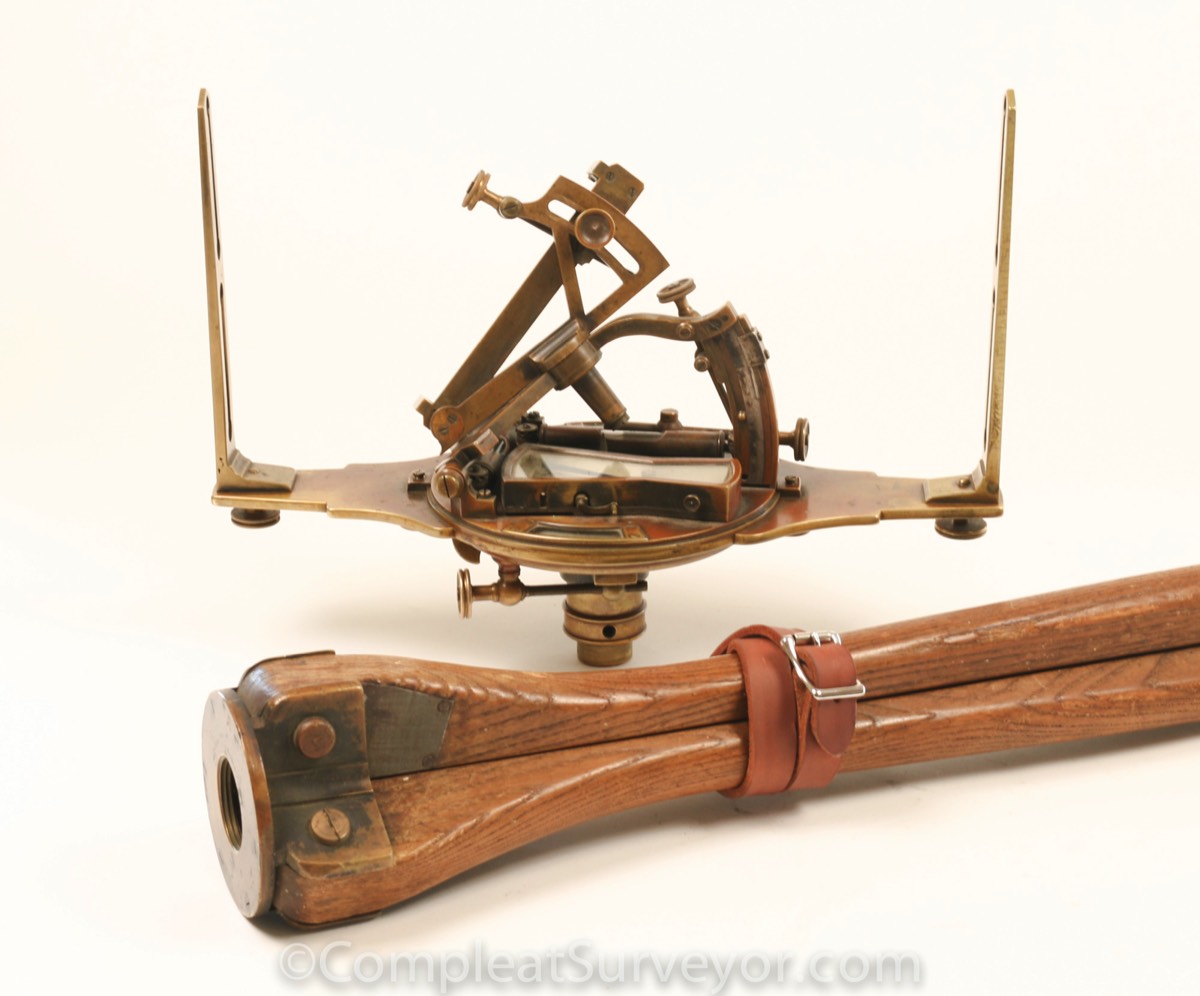
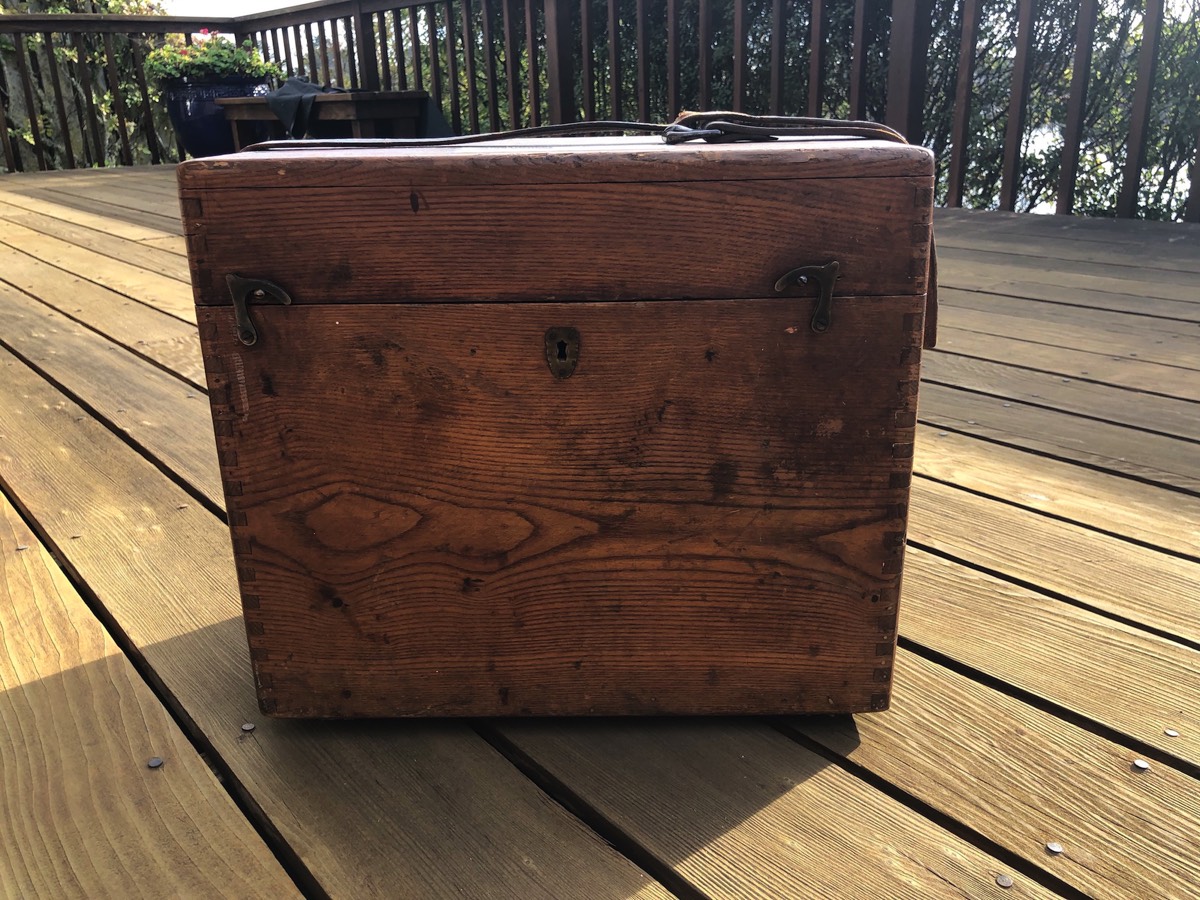
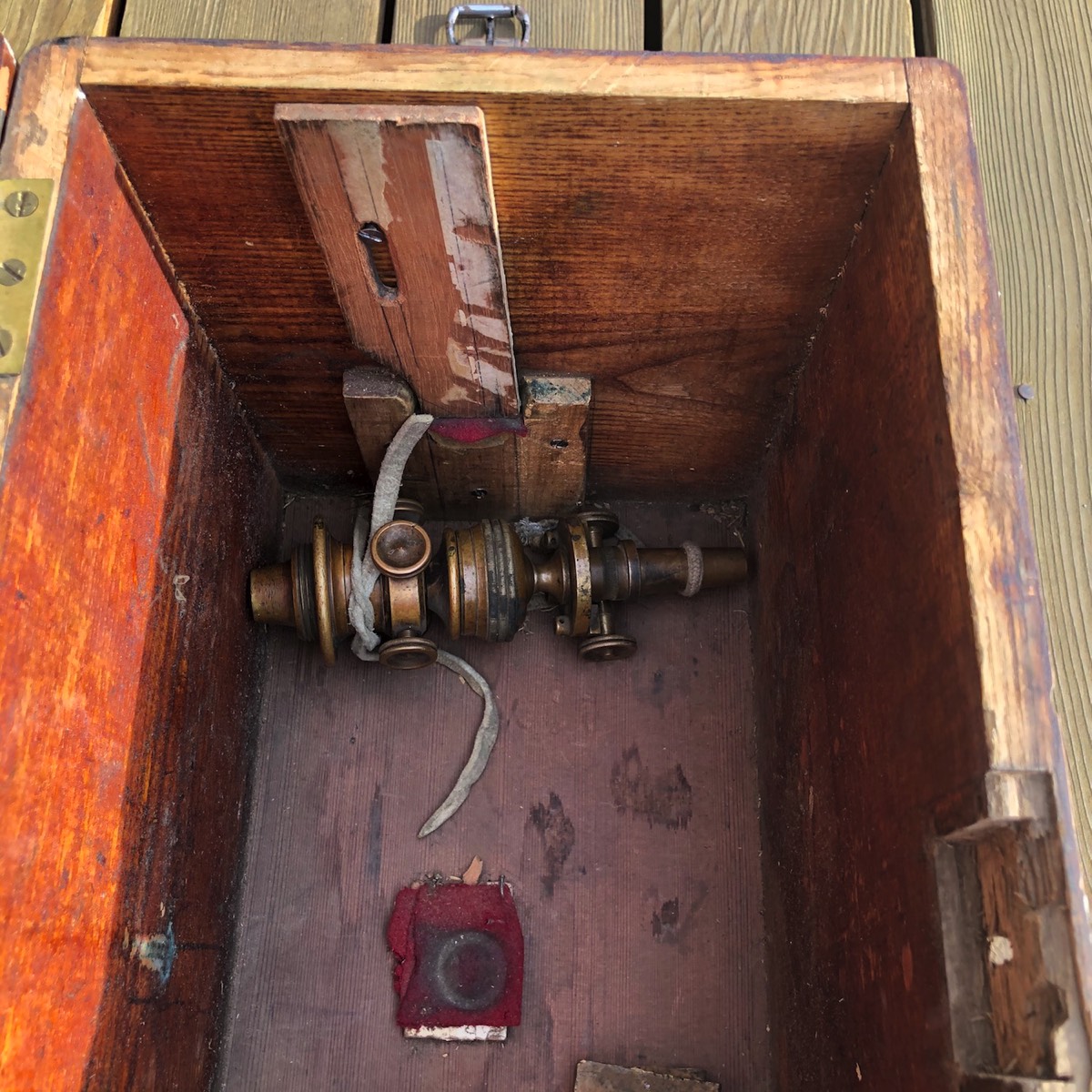
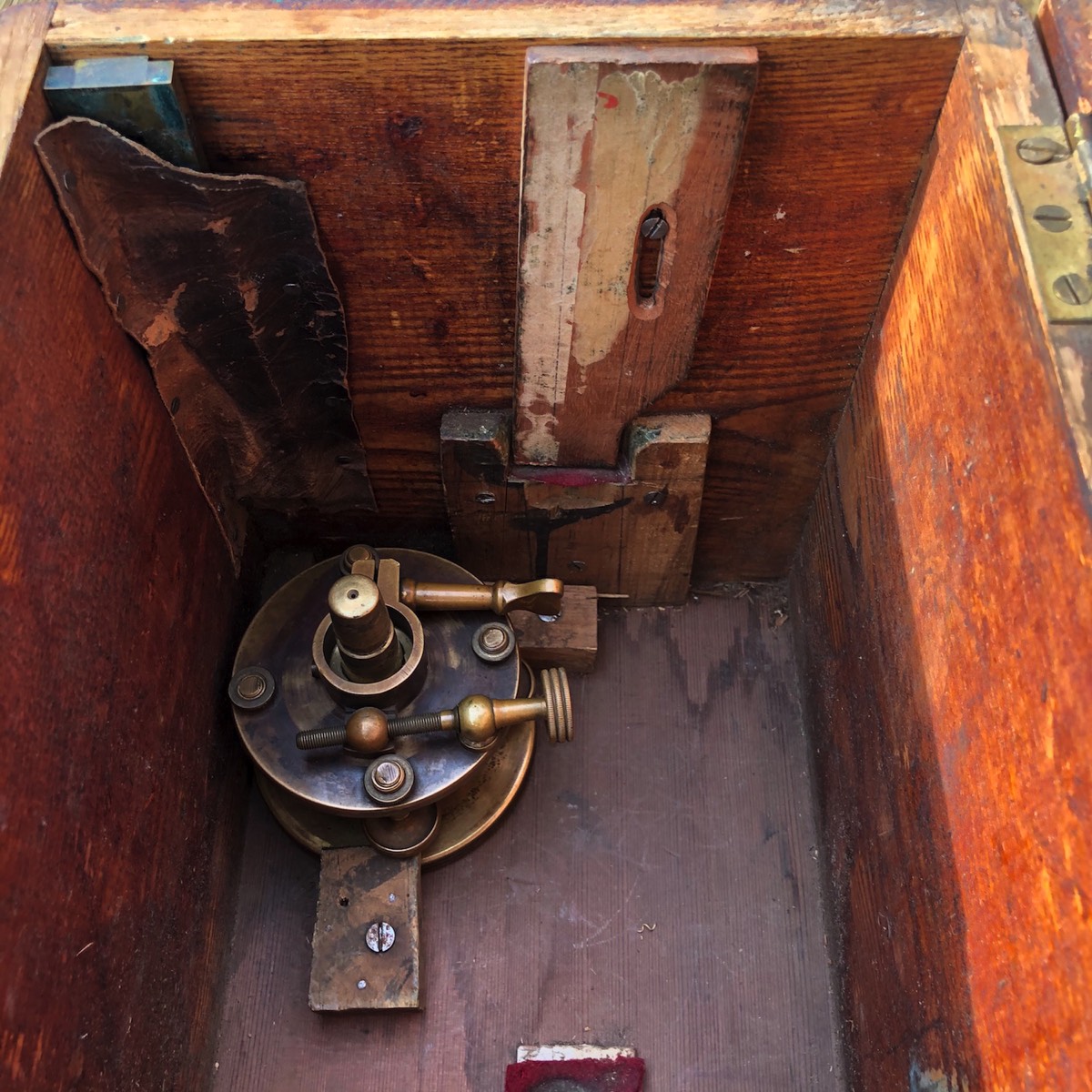


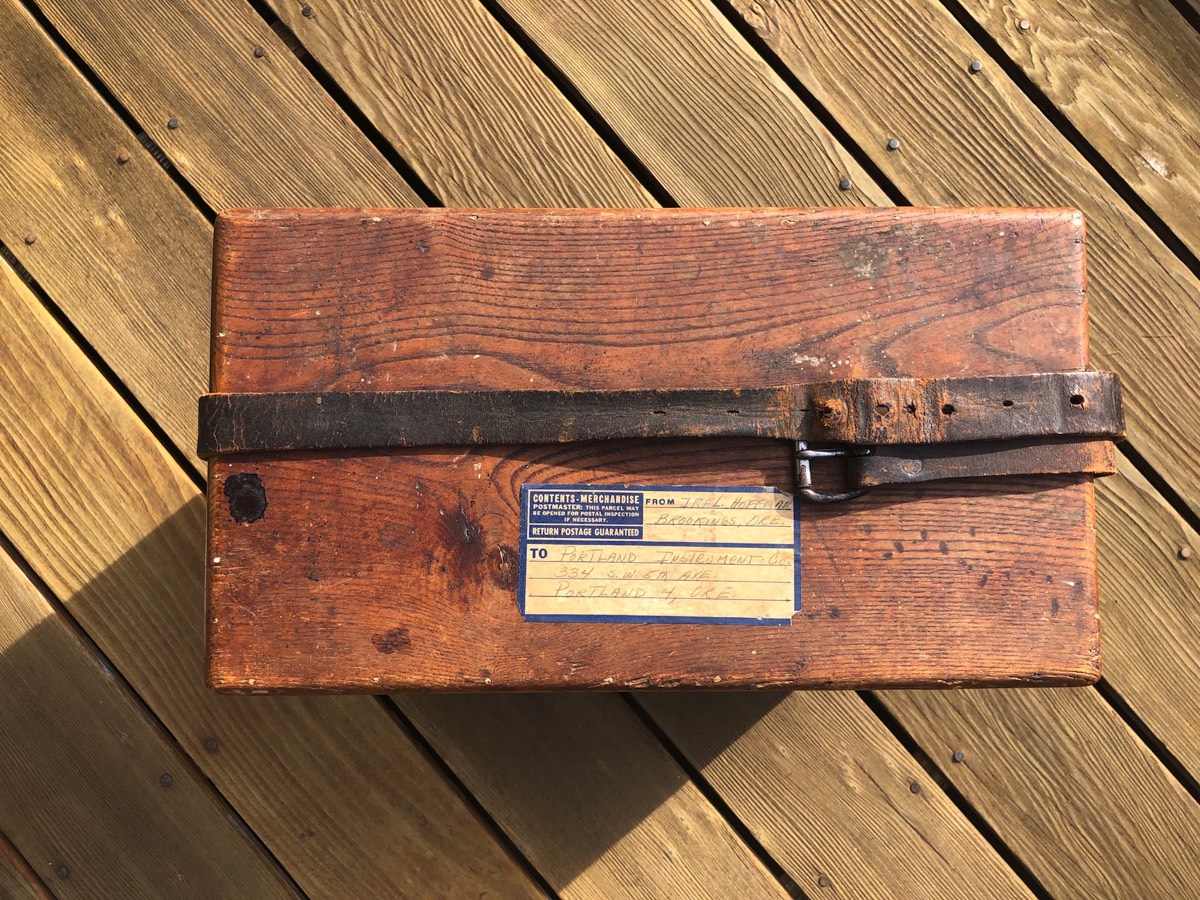
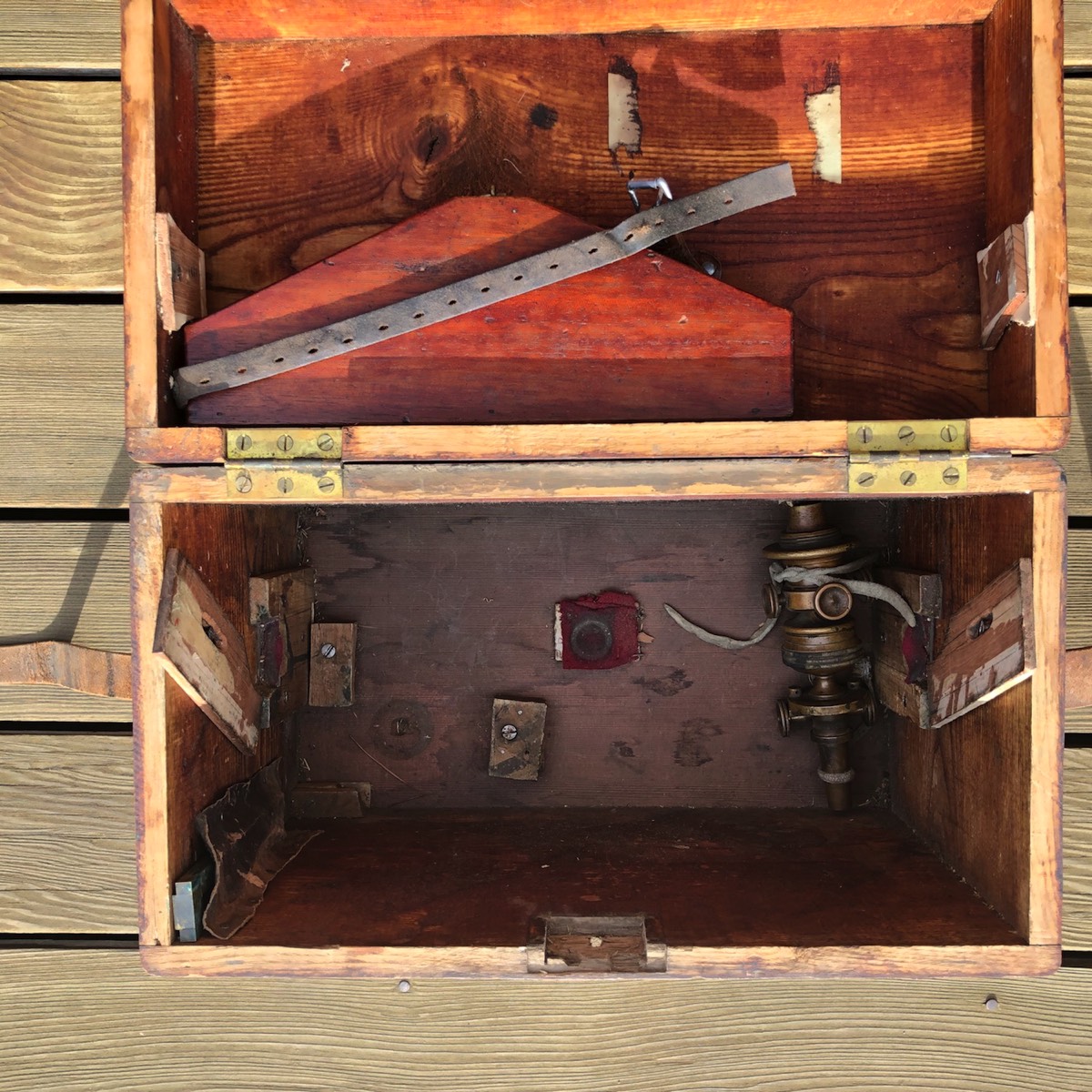
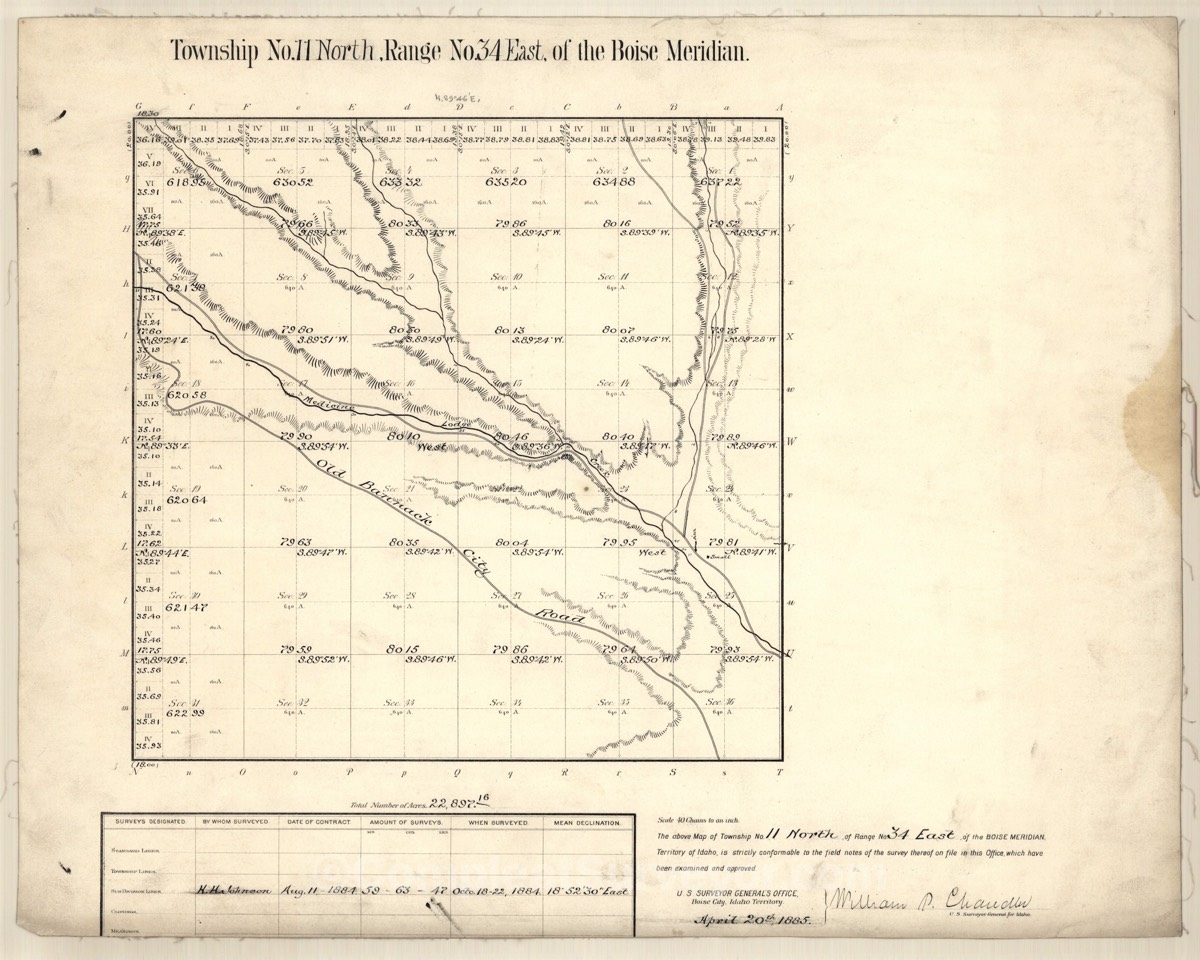

© 2020 Russ Uzes/Contact Me